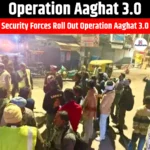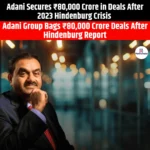|
GS Paper II: Impact of Policies and Politics of Countries on India’s Interests, Bilateral Groupings and Agreements, Global Groupings |
Why in News?
On February 24, 2025, the Russia-Ukraine War completed three years. Over these years, the conflict has affected millions of people, yet a resolution remains elusive. U.S. President Donald Trump is trying to end the war, but the situation remains tense.
Background of Russia-Ukraine War
Russia and Ukraine share deep historical, cultural, and political ties. The territory of Ukraine has been part of various empires and political structures since ancient times. The roots of the current conflict are embedded in history.
- Ukraine-Russia Relations:
- Both Ukraine and Russia originate from the same cultural and historical background. In the 10th and 11th centuries, Kievan Rus was a major state in Eastern Europe, with Kyiv as its capital.
- This state was a political union of Eastern Slavs, Baltic, and Finnic tribes, laying the foundation for the cultural identity of modern Russia, Ukraine, and Belarus.
- However, in the 13th century, the Mongol invasion by the Golden Horde led to the complete disintegration of Kievan Rus.
- Over the centuries, Ukrainian lands came under the rule of various foreign powers. By the 15th century, a significant portion of Ukraine became part of the Grand Duchy of Lithuania.
- Russian Empire’s Control
- In the 18th century, Empress Catherine the Great of Russia annexed most of ethnically Ukrainian territory into the Russian Empire.
- Afterward, the Russian monarchy pursued policies aimed at suppressing Ukrainian cultural and linguistic identity.
- Russian was promoted as the dominant language, and efforts were made to weaken Ukrainian national consciousness.
- Despite this, many Ukrainians migrated to different parts of the Russian Empire, where they held influential positions.
- However, nationalist sentiments continued to grow, eventually evolving into a movement for Ukrainian independence.
- Soviet Era
- After World War I, the Russian monarchy collapsed, leading to the rise of the Soviet Union (USSR).
Following the October Revolution of 1917, several short-lived independent Ukrainian states emerged but were soon absorbed into the Soviet Union. In 1922, Ukraine officially became the Ukrainian Soviet Socialist Republic (Ukrainian SSR) within the USSR. - During Soviet rule, Ukraine’s autonomy remained limited. In the 1930s, Soviet leader Joseph Stalin’s policies led to a devastating famine known as the Holodomor, in which millions of Ukrainians perished.
- Even after World War II, Ukraine remained a part of the Soviet Union, but the desire for independence among its people continued to strengthen over time.
- After World War I, the Russian monarchy collapsed, leading to the rise of the Soviet Union (USSR).
- Ukraine’s Independence
- With the dissolution of the Soviet Union in 1991, Ukraine declared its independence.
On August 24, 1991, the Ukrainian Parliament (Verkhovna Rada) passed the Act of Independence. In December 1991, the leaders of Belarus, Russia, and Ukraine officially dissolved the Soviet Union and formed the Commonwealth of Independent States (CIS). - However, Russia never fully accepted Ukraine’s complete independence.
Due to Ukraine’s geopolitical position, natural resources, and strategic importance, Russia has consistently tried to keep Ukraine within its sphere of influence.
- With the dissolution of the Soviet Union in 1991, Ukraine declared its independence.
- NATO Expansion
- After 1991, Ukraine began moving closer to Western countries. With the support of the United States and the European Union, it sought to transform its economy and political system toward democracy.
- However, Russia’s primary concern was the expansion of the North Atlantic Treaty Organization (NATO).
- In 2004 and 2014, major public uprisings in Ukraine—the Orange Revolution and Euromaidan Movement—led to the fall of pro-Russian governments and the rise of pro-Western leadership.
- Ukraine accelerated its process of seeking NATO membership, which Russia viewed as a serious security threat.
Beginning of Russia-Ukraine War and Key Events
The Russia-Ukraine war did not begin in a single day; rather, its seeds were sown over several years. This conflict started with the Crimean crisis in February 2014 and gradually escalated into a full-scale military confrontation. Several significant events took place between Russia and Ukraine during this period, making the war even more complex.
- Crimean Crisis (2014): In February 2014, after the Euromaidan movement, Ukraine’s then-president Viktor Yanukovych was removed from power. This change was a major setback for Russia because Yanukovych was a pro-Russian leader. After the regime change, Ukraine began moving closer to Western countries, which angered Russia.
- Shortly after, Russia sent unidentified uniformed soldiers into Crimea, later referred to as “Little Green Men.”
- These soldiers took control of key government buildings, airports, and military bases in Crimea.
- Russia dissolved Crimea’s parliament and installed a pro-Russian government.
- In March 2014, Russia held a referendum in Crimea, claiming that 97% of voters supported joining Russia.
- On March 18, 2014, Russia officially annexed Crimea.
- The West and the United Nations declared this annexation illegal.
- Ukraine accused Russia of violating its sovereignty, marking the beginning of the conflict.
- Donbas Region: Soon after Crimea’s annexation, pro-Russian separatists in Eastern Ukraine’s Donbas region (Donetsk and Luhansk) began seizing government buildings.
- In April 2014, separatists declared the formation of the “Donetsk People’s Republic” (DPR) and “Luhansk People’s Republic” (LPR).
- Ukraine’s military launched an operation to regain control, leading to armed clashes.
- Russia was accused of supplying weapons and military support to the separatists, though Moscow denied these claims.
- The fighting resulted in thousands of deaths and the displacement of millions.
- Tensions Between 2014-2021:
- In 2015, the Minsk Agreement was signed to implement a ceasefire, but it was never fully successful.
- In 2018, Russia attacked Ukrainian naval vessels in the Azov Sea, escalating tensions.
- From 2019 to 2021, Russia increased military deployments near Ukraine’s borders.
- 2022: Full-Scale War
- On February 21, 2022, Russia recognized Donetsk and Luhansk as independent states.
- On February 22, 2022, Russian troops entered these regions under the pretext of “peacekeeping.”
- On February 24, 2022, Russia launched a full-scale invasion of Ukraine.
- Russia attacked Ukraine from three directions:
- From the north via Belarus,
- From the east through Donbas,
- From the south via Crimea.
- Russia attempted to capture Kyiv, but Ukrainian forces strongly resisted.
- Major cities like Mariupol, Kharkiv, and Kherson came under heavy attack.
- Western countries began supplying Ukraine with weapons and military aid.
Wider Impact of the Russia-Ukraine War
The impact of the Russia-Ukraine war has not been limited to these two countries alone; it has significantly affected the global economy, energy supply, human rights, and social stability.
- Economic Impact
- Before the war, Russia supplied a large amount of natural gas and oil to Europe. However, after the war began, Western countries imposed strict sanctions on Russia.
- Before the war, a major share of Europe’s gas supply came from Russia, but now it has dropped to only 8%.
- Europe has increased LNG (Liquefied Natural Gas) imports from the US, Norway, and Qatar, leading to a sharp rise in energy prices.
- The increase in energy costs has affected Europe’s industrial production, causing inflation and putting extra pressure on consumers.
- Russian Economy
- Severe economic sanctions have weakened Russia’s economy.
- Russian banks were removed from SWIFT, disrupting international trade.
- Foreign companies left Russia, leading to rising unemployment and economic instability.
- The European Union banned Russian oil and gas, forcing Russia to divert its resources to China and India.
- Russia is a major producer of nickel and aluminum, but the war disrupted their supply chains.
- Humanitarian Crisis
- Thousands of soldiers and civilians have died in the war. Heavy bombing of Ukrainian cities has caused massive destruction of infrastructure, including schools, hospitals, and residential areas.
- According to the United Nations, over 10 million people have been displaced due to the war.
- The influx of refugees into European countries has created social and economic challenges.
- Children’s education has been disrupted, with schools shutting down and mental health issues rising.
- Women have faced violence and exploitation, leading to an increase in gender-based violence and human trafficking cases.
- Impact on Health
- Soldiers and civilians have suffered from Post-Traumatic Stress Disorder (PTSD) and psychological trauma.
- The destruction of medical facilities has led to an increase in diseases and reduced access to healthcare services.
- The potential use of radioactive and chemical weapons could have long-term health consequences.
- Environmental Impact
- Heavy bombings and shelling have caused severe environmental damage.
- Toxic gases released from explosions have increased air pollution.
- Water sources in war-affected regions have been contaminated, and agricultural land has been destroyed.
Global Response to the Russia-Ukraine Conflict
Since the beginning of the Russia-Ukraine war, different countries and international organizations have responded in various ways to address the crisis.
- Support for Ukraine
- The United States has been the largest supporter of Ukraine in this war, providing over $70 billion in military and financial aid.
- The United Kingdom and Germany have provided weapons and financial assistance to Ukraine.
- Poland and the Baltic states have sheltered refugees and increased military cooperation with Ukraine.
- NATO has not directly participated in the war but has provided advanced weapons, drones, and air defense systems to Ukraine.
- Sanctions on Russia
- After the war began, the US, European Union, UK, Australia, Canada, and Japan imposed strict economic and trade sanctions on Russia.
- Western companies pulled out of Russia, affecting its economy and increasing unemployment.
- United Nations (UN)
- The UN passed several resolutions calling for an end to the war and promoting diplomatic negotiations.
- The UN General Assembly condemned Russia’s invasion through multiple resolutions.
- UN Secretary-General engaged with both Russian and Ukrainian leaders to push for ceasefire and peace talks.
- The UN launched the Black Sea Grain Initiative, allowing Ukrainian grain exports to reach global markets despite the war.
- G-7 and Other Global Reactions
- The G-7 nations (US, UK, France, Germany, Italy, Canada, and Japan) declared Russia’s actions illegal and a violation of international laws.
- India took a neutral stance, emphasizing dialogue and diplomacy to resolve the conflict.
- China refused to condemn Russia and avoided calling the war an invasion. In 2023, China proposed a peace plan, but Western nations viewed it as pro-Russian.
The Way Forward
- Ceasefire and Dialogue: To end the Russia-Ukraine war, both parties must prioritize dialogue and diplomacy. Continued violence is not only devastating for Ukraine and Russia but also destabilizing for the entire world. War is not a solution; it only leads to further destruction.
- Respect for International Law: The UN Charter and international laws clearly state that civilians and civilian infrastructure should not be targeted during war. However, the Russia-Ukraine conflict has repeatedly violated these principles. Global stability is impossible without respect for sovereignty, territorial integrity, and international law. Western nations, the UN, and other international organizations must ensure that all sides adhere to these rules.
- Minsk Peace Process: To establish long-term peace, the Minsk Peace Process could be revived. This agreement was originally designed to resolve conflicts in the Donbas region but was never fully implemented. The US and the European Union should encourage both Russia and Ukraine to fulfill their commitments under this process.
|
UPSC Previous Year Question (PYQ) Question: Consider the following statements regarding the Bilateral Investment Promotion and Protection Agreement (BIPPA): (1) Its objective is to promote and protect the interests of investors from any country in the territory of another country. Which of the above statements is incorrect?
|
Explore our Books: https://apnipathshala.com/product-category/books/
Explore Our test Series: https://tests.apnipathshala.com/









